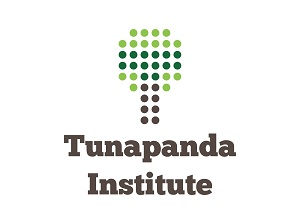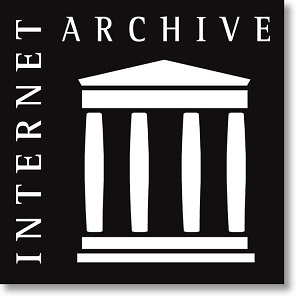
 Special to the Philanthropy Journal
Special to the Philanthropy Journal
By Shelly Craddock and Lacy Isley
As a land-grant university, NC State is committed to providing students hands-on, highly-engaged learning opportunities AND to providing research that is of direct, practical use to the fields we work in. Philanthropy Journal proudly presents the latest in a series of evidence-based resource articles developed by Dr. Amanda J. Stewart‘s masters level Management of Nonprofit Organizations classes. These articles represent a perfect overlap of engaged learning and practical research.
 “Should we accept cryptocurrency as a form of donation?,” a question nonprofits may not have expected to receive 15 years ago. This is now a reality for many nonprofit executives and their boards. Nonprofits consider a lot of ways to diversify their funding, whether it be through accepting donated cars, property, or even boats. Not too long ago stock transfers offered a new way to diversify funds, is it now time to open the space up to cryptocurrency donations? Within the nonprofit sector, organizations such as Songs of Love, a nonprofit that creates and delivers original songs for children suffering from medical, emotional, or physical challenges, Tunapanda Institute, an organization that runs intensive technology design and business training programs, and Internet Archive, a nonprofit that has been archiving the web since 1996, have integrated Bitcoin into their funding agenda. Throughout this article we will be exploring best practices on using cryptocurrency as a source of donations by examining how these nonprofits have succeeded in utilizing cryptocurrency as a funding source.
“Should we accept cryptocurrency as a form of donation?,” a question nonprofits may not have expected to receive 15 years ago. This is now a reality for many nonprofit executives and their boards. Nonprofits consider a lot of ways to diversify their funding, whether it be through accepting donated cars, property, or even boats. Not too long ago stock transfers offered a new way to diversify funds, is it now time to open the space up to cryptocurrency donations? Within the nonprofit sector, organizations such as Songs of Love, a nonprofit that creates and delivers original songs for children suffering from medical, emotional, or physical challenges, Tunapanda Institute, an organization that runs intensive technology design and business training programs, and Internet Archive, a nonprofit that has been archiving the web since 1996, have integrated Bitcoin into their funding agenda. Throughout this article we will be exploring best practices on using cryptocurrency as a source of donations by examining how these nonprofits have succeeded in utilizing cryptocurrency as a funding source.

To shed some light on those who aren’t familiar, Bitcoin is a type of digital currency – a subset of “cryptocurrency.” Bitcoin can be used to pay for things electronically, if both parties are willing. In that sense, it’s like conventional dollars, euros, or pesos, which are also traded digitally. Bitcoin is not controlled or backed by any central authority or sovereign government. The supply of Bitcoins and all transactions are instead controlled on the currency’s peer-to-peer network. The process of accepting Bitcoin as a donation is reasonably simple. An organization creates an account with a third-party processing company (e.g., Bitpay or Coinbase), and then incorporates the payment option into its online donation portal. With this system in place, organizations can accept incoming Bitcoin donations and then exchange them at the time of a transaction, if desired, for legal tender. Sometimes the third-party processing company is not necessary. Internet Archive is does not use a middle application. Instead, they have their QR codes directly on their website for donations. If your organization has technical capacities, there may be no need for the middle application.
Even though each organization interviewed operated with different core competencies and markets, they all agreed that cryptocurrency is the future of money.

Think You’re Ready?
Using Bitcoin is a new lens through which to look at fundraising for nonprofits. From these interviews we were able to examine how these nonprofits have succeeded in utilizing cryptocurrency as a funding source and the following are some tips we developed for other organizations who are looking to diversify their funding sources.
- Research and Become Knowledgeable
Even organizations not in the technology or digital sector can successfully implement Bitcoin into their funding. Accepting Bitcoin or other forms of cryptocurrency is very similar to accepting cash donations. The only difference is converting it. John Beltzer, President and Founder of Songs of Love, says,“just get into it and read everything about it, and just inform yourself. Go to meetups, talk to other people. Don’t take shortcuts, get into it, get into the space, understand what you’re doing.” Cryptocurrency can seem daunting, but the community and material is out there for people to educate themselves.
- Align Cryptocurrency Fundraising with Your Mission
Jay Larson, Co-Founder of Tunapanda, said “the more you are aligned with open source technology and open sourced content the more resonation you will have with the core people who care about the future of money and creating a more inclusive world through inclusive finance.” When asked about the ease of integrating cryptocurrency into their funding plan, Katie Barrett, Development Director from Internet Archive, had this to say: “I think it’s more part of our ethos. It’s our mission, it’s who our founder is, it’s who we are. It’s who we hang out with, it’s part of our community.” Alignment with bitcoin can be interpreted to encompass not just direct mission specific programs but also with organizations that put a premium on forward thinking and innovation.
- Get Everyone Involved
Everyone has to be on board. It is important to have consistent messaging throughout all departments in regards to donations. The marketing and communications team is responsible for letting donors know Bitcoin is an option and the benefits of donation with this medium. The development team needs to stay up to date on training of the new platform for donations. Making sure all departments are on board with implementing cryptocurrency is an ongoing effort.
- Start With One Cryptocurrency and Grow
Katie Barrett recommends starting with Bitcoin because it’s the most popular and easy to use. From there you can grow and expand the types of cryptocurrencies you work with and accept. There are many types of cryptocurrencies, they are Bitcoin, Litecoin (LTC), Ethereum (ETH), Ripple (XRP), Bitcoin Cash, and Ethereum Classic. By expanding the types of cryptocurrencies you accept, you expand the donor base.
- Treat Cryptocurrency like a Stock Donation
The value of virtual currencies is highly volatile, Katie Barrett, Development Manager at Internet Archive, emphasized treating the donation like a stock and convert it to cash as soon as it is received. The cryptocurrency market is very volatile. Barrett warns against holding onto donations and waiting until the market goes up to convert them to dollars. “A donor is giving you that donation, not because they want you to play the market, they want to give you the cash value of that donation.”
When it comes to managing the financial risks associated with virtual currencies and ensuring that all donations are accurately reported, management teams and Boards should be aware of the of their responsibilities and the changing policies surrounding Bitcoin. Jay Larson said “you do not have to learn about how all the technology works and know about the whole space.” Katie Barrett from Internet Archive echoed this point and advocates for everyone to try implementing Bitcoin as part of their fundraising.
One positive aspect of Bitcoin for organizations is if an they sells it at a gain, there should not be any taxable income for the organization. The IRS treats Bitcoin as property. Sales of property that are not inventory or stock-in-trade are excluded from Universal Basic Income Tax (UBIT), regardless of how long the charity holds the Bitcoin.
As the use of Bitcoin and cryptocurrency in general continues to grow, it’s critical that organizations understand best practices of accepting donations in virtual currency. If your organization is considering whether or not to accept such donations, we encourage you to get involved in the community, do research, acknowledge the complex and evolving rules, and go for it. John Beltzer said it best, “It opens your nonprofit up to a whole new area of funding…it’s just another way to get the funds needed so we can reach more [people]. Why not get in on this?”
Shelly Craddock is originally from Jacksonville, FL but moved in August 2015 to attend North Carolina State University as an undergraduate and is now in pursuit of a Master’s degree in Public Administration. Her interests include the intersection of governments and nonprofits, as well as social equity in public policy.
Lacy Isley, originally from Stem, NC, is currently a second year MBA candidate at the Jenkins Graduate School of Management at North Carolina State University. She is passionate about the relationship between the for-profit and non-profit sectors.




